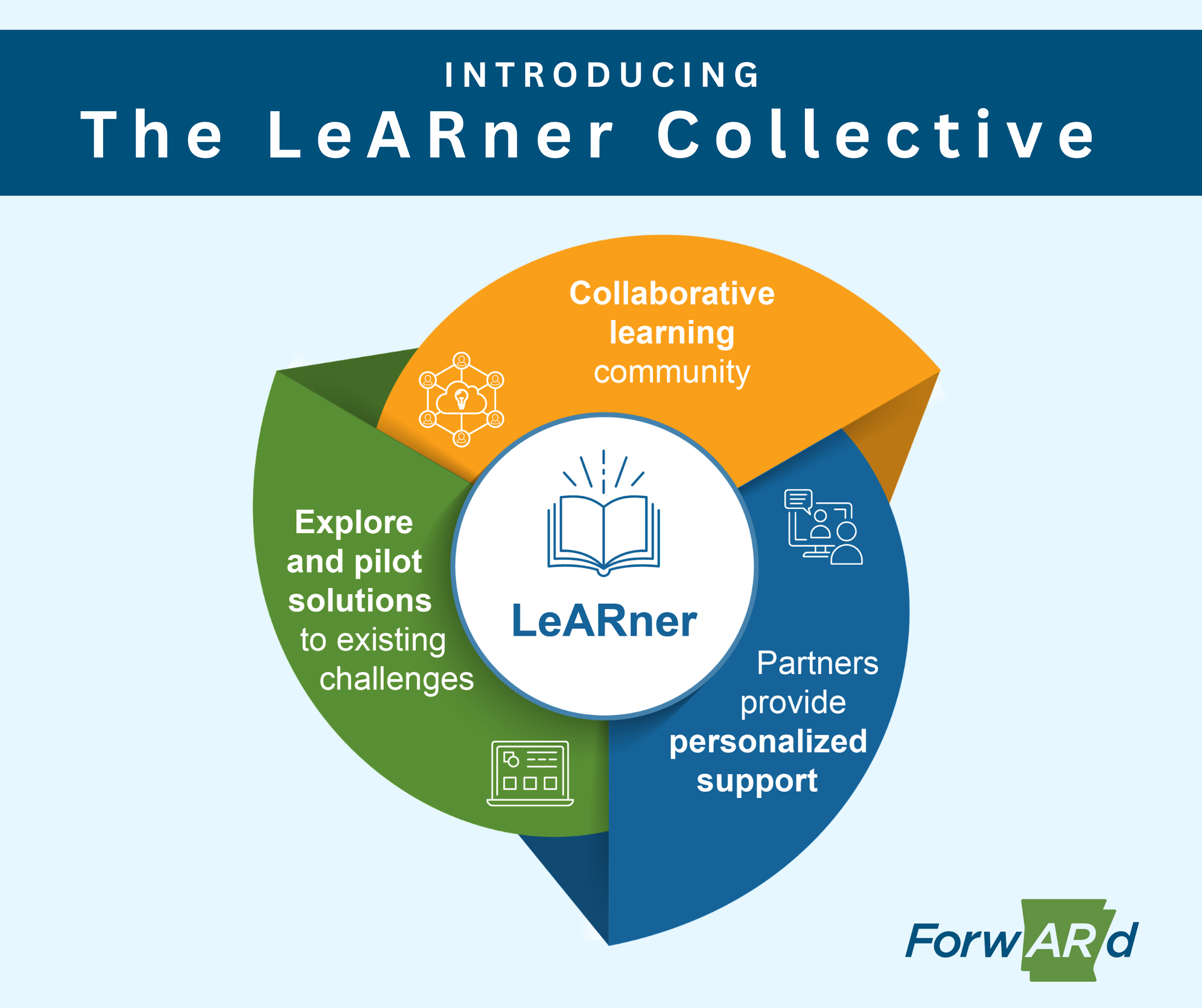Arkansas LEARNS | Readiness
Last year, the Arkansas General Assembly passed the LEARNS Act, a comprehensive education reform package. LEARNS will impact many aspects of our education system and includes several core priorities identified by Forward’s “The State of Education in Arkansas 2023 Report.” In the following blog, we dive deeper into how the law is expected to affect career and technical education (CTE) and its connection to career opportunities. Our goal is to continue informing Arkansans about our current state of education and how policy changes enacted through LEARNS will impact Arkansas education and our students.
Headline: Career and technical education is a crucial component of educating the next generation of Arkansans and preparing them for career opportunities. However, we are currently experiencing a disconnect between CTE and industry needs.
Looking at the data: Per a LEARNS Executive Order, our state commissioned a first-of-its-kind audit of our career pathways. The report, conducted by the Office of Education Policy and Insightful Education Solutions, highlighted the need to rethink, restructure and modernize CTE. Key takeaways included:
- Few CTE completers (i.e., individuals who have taken three courses in a program of study) earn an industry credential of value, post-secondary credits or matriculate to postsecondary education.
- There is little alignment between the top high school CTE programs of study and the state’s high-demand, high-skill and high-wage occupations (H3).
- District personnel highlighted finding, hiring, and keeping CTE teachers as significant challenges.
- The lack of linked data between CTE and post-secondary pursuits does not allow for evaluating longitudinal outcomes or ROI.
Readiness, the R in LEARNS: From Forward’s vantage point, LEARNS aims to course-correct how we are preparing today's students for tomorrow’s workforce through three respective channels:
- Building awareness
- Requires districts to provide career awareness and exploration activities (e.g., field trips, guest speakers) to 6th-8th-grade students and hold informational meetings with parents of 6th-12th-grade students about career options, in conjunction with course scheduling
- Bolsters student success plans by including a recommended sequence of courses that align with various pathways to diploma.
- Strengthening pathways and emphasizing work-based learning opportunities
- Introduces the course choice program no later than the 2025-2026 school year to allow public school students to pursue vocational or technical coursework with businesses and outside entities
- Aligns high school CTE with post-secondary options to encourage the stacking of credentials versus starting from scratch
- Creates the career-ready pathway to diploma that aligns with high-wage, high-growth jobs, beginning with the 9th-grade class of 2024-2025
- Go deeper into the legislation, starting on pg. 34
- Tracking the Long-Term Value of a Pathway
- Develops a system for collecting, analyzing and reporting student outcomes associated with career pathway completion
- Leverages comprehensive data to adjust, approval or deny pathway programs
What are we watching?
- The data, especially around the career diploma - Auditors consistently expressed how current data limitations prevented student-level analysis on outcomes and ROI. Student-level analysis gives us a clearer, more detailed picture for better insight. As implementation proceeds, ensuring access to quality, relevant and timely data will allow for adjustments if issues or unintended consequences arise.
- The load on counselors and their response - These professionals play a critical role in the educational experience, from advising students on academics and career planning to needed social and emotional services. With counselors’ growing list of responsibilities to meet students’ needs, career coaches may need to step in to help lighten the load.
- Defining, High Demand, High Wage, and High Skilled (H3): The state currently does not have a unified definition of H3, and it's hard to reach or build toward what is not clearly established. In addition, some high-demand industries need skilled workers, such as the brain-building early childhood educators, but the field’s lower wages could remove it from focus. We need to develop a robust H3 definition that does not inadvertently deplete the H2 professions, which are stepping stones to higher wages or skills.
Bottom line: CTE is one educational component aiming to prepare students to enter into a career, enlist or start their post-secondary matriculation with the needed skills, credentials or credits. Unfortunately, many of our CTE pathways are currently considered “dead ends” and do not lead to our desired outcomes. Our vision is that all students have access to high-quality career pathway programs, such as CTE, which provide exposure and access to diverse opportunities after high school. We hope the ideas within LEARNS will accomplish this, but the proof will be in the (data) pudding.
Thanks to Aaron Duvall for his CTE insights!
 Malachi Nichols
Malachi Nichols 

